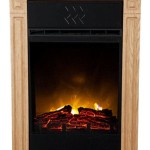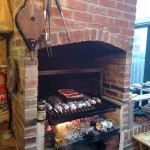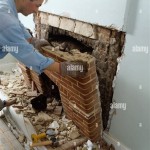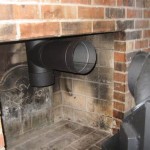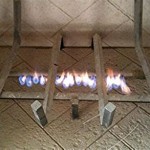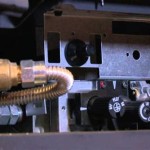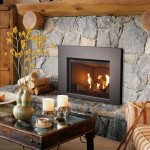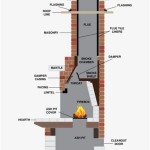Realistic Electric Fireplace Inserts: A Comprehensive Guide
Electric fireplace inserts offer a convenient and efficient solution for adding the ambiance of a traditional fireplace to a home without the complexities associated with wood-burning or gas-fueled models. A key factor driving the popularity of these inserts is the increasing realism they offer. This article delves into the features and considerations surrounding realistic electric fireplace inserts, examining what constitutes realism, the technology behind it, and the factors to consider when selecting the optimal model for a given space.
An electric fireplace insert is essentially a self-contained heating unit designed to be placed within an existing fireplace opening or a custom-built enclosure. It typically consists of a heating element, a display that simulates flames, and controls for adjusting heat output and flame effects. The level of realism achieved varies significantly between different models and price points.
Defining Realism in Electric Fireplace Inserts
The term "realistic" in the context of electric fireplace inserts refers to how closely the simulated flames and ember bed resemble a genuine wood-burning fire. Several elements contribute to this perception of realism, including flame appearance, flame movement, ember bed design, and sound effects. These elements are the primary focus of manufacturers seeking to create truly immersive and convincing electric fireplaces.
Flame appearance encompasses the color, shape, and intensity of the simulated flames. Early electric fireplaces often featured flames that were overly uniform in color and movement, detracting from the sense of authenticity. Modern inserts, however, utilize advanced technologies to produce flames with varying shades of orange, yellow, and even blue, mimicking the natural color variations found in real flames. The shape of the flames is also crucial; realistic inserts often feature flames that flicker and dance in a non-repeating pattern, avoiding the artificial look of repetitive looping animations.
Flame movement is another critical aspect of realism. Simple electric fireplaces might rely on a basic rotating reflector to create the illusion of movement. More sophisticated models employ sophisticated projection techniques, LED lighting, and intricate flame patterns that simulate the unpredictable and dynamic nature of a real fire. Some inserts even incorporate 3D flame effects that add depth and dimension to the display.
The ember bed, the area beneath the flames where embers glow and smolder, also contributes significantly to the overall realism. In less realistic models, the ember bed might consist of a single, uniformly colored surface. However, realistic inserts often feature a textured ember bed with varying shades of red, orange, and black, mimicking the look of burning wood and glowing embers. Some models also incorporate simulated ember movement, such as flickering lights or rotating components, to further enhance the effect.
Sound effects can play a surprisingly important role in creating a realistic fireplace experience. The crackling and popping sounds of burning wood can add a layer of immersion that enhances the visual realism of the flames. Some electric fireplace inserts generate these sounds electronically, while others incorporate actual recordings of wood-burning fires. The quality and authenticity of these sound effects significantly impact the overall experience.
Technology Behind Realistic Flame Effects
The technologies used to create realistic flame effects in electric fireplace inserts have advanced significantly in recent years. The shift towards LED lighting, advanced projection techniques, and sophisticated control systems has enabled manufacturers to produce increasingly convincing and immersive flame displays.
LED lighting has become the dominant technology for creating flame effects in electric fireplace inserts. LEDs offer several advantages over traditional incandescent bulbs, including lower energy consumption, longer lifespan, and greater control over color and intensity. The ability to precisely control the color and brightness of individual LEDs allows manufacturers to create flames with realistic color variations and dynamic lighting effects.
Projection technology is another key component in many realistic electric fireplace inserts. Projectors can be used to cast images of flames onto a screen or through a partially reflective surface, creating the illusion of three-dimensional flames. These projection systems often incorporate sophisticated algorithms that generate non-repeating flame patterns, further enhancing the realism of the display. Some higher-end models utilize holographic projection techniques to create even more convincing 3D flame effects.
Sophisticated control systems are essential for coordinating the various elements that contribute to flame realism. These systems typically include microprocessors and sensors that monitor and adjust the flame color, intensity, movement, and sound effects. Some inserts also incorporate smart features that allow users to control the fireplace remotely via a smartphone app or voice commands. These smart features can be used to adjust the flame settings, set timers, and even monitor energy consumption.
One advanced technique involves using what is referred to as "Misty Flame" technology. This uses a fine mist of water vapor illuminated by LED lights to create a flame effect. The mist interacts with the light to create a three-dimensional, flickering flame that closely resembles a real fire. This technology often allows for adjustable flame height and intensity, adding to the customizable realism.
Factors to Consider When Choosing a Realistic Electric Fireplace Insert
Selecting the right electric fireplace insert requires careful consideration of several factors, including the size of the space to be heated, the desired level of realism, the budget, and the installation requirements.
The size of the space is a crucial factor in determining the appropriate heating capacity of the insert. Electric fireplace inserts are typically rated in terms of their BTU (British Thermal Unit) output or their wattage. A higher BTU or wattage rating indicates a greater heating capacity. It is essential to choose an insert that is appropriately sized for the room to ensure efficient and effective heating. An undersized insert will struggle to heat the space adequately, while an oversized insert may waste energy and create an uncomfortable environment.
The desired level of realism is another important consideration. As discussed earlier, the level of realism can vary significantly between different models. When evaluating different inserts, it is important to carefully examine the flame appearance, flame movement, ember bed design, and sound effects. Consider personal preferences and the desired aesthetic for the space. Some consumers may prioritize a highly realistic flame display, while others may be satisfied with a more basic model. Viewing live demonstrations or watching videos of different inserts can be helpful in making this determination.
Budget is always a significant factor in any purchasing decision. Realistic electric fireplace inserts can range in price from a few hundred dollars to several thousand dollars, depending on the features and level of realism. It is essential to establish a budget and then explore the options within that price range. While higher-priced models often offer superior realism and more advanced features, it is possible to find attractive and functional inserts at more affordable price points.
Installation requirements should also be taken into account. The installation process typically involves placing the insert into an existing fireplace opening or a custom-built enclosure and then connecting it to a standard electrical outlet. Some inserts may require professional installation, particularly if they involve hardwiring or modifications to the existing electrical system. Before purchasing an insert, it is important to carefully review the installation instructions and ensure that all necessary electrical work is performed by a qualified electrician.
Energy efficiency is also an important factor. While electric fireplaces are generally considered to be more energy-efficient than wood-burning fireplaces, the energy consumption can vary depending on the model and usage patterns. Look for inserts with energy-saving features, such as adjustable thermostat controls, timers, and LED lighting. These features can help to minimize energy consumption and reduce heating costs.
Finally, consider the warranty and customer support offered by the manufacturer. A comprehensive warranty can provide peace of mind and protect against defects or malfunctions. Read customer reviews to get an idea of the manufacturer's reputation for reliability and customer service. Choose a brand with a proven track record of providing high-quality products and responsive customer support.
In conclusion, realistic electric fireplace inserts offer a compelling combination of convenience, efficiency, and aesthetic appeal. By understanding the technology behind these inserts and carefully considering the factors outlined above, consumers can make informed decisions and select the optimal model for their needs.

Realistic Electric Fireplace Modern Flames

A Guide To Realistic Electric Fireplaces Direct Learning Center

The Most Realistic Electric Fireplace Flames Dimplex Vs Magikflame

A Guide To Realistic Electric Fireplaces Direct Learning Center

Electric Fires That Look Like Real British

11 Best Electric Fireplaces 2024 Most Realistic

A Guide To Realistic Electric Fireplaces Direct Learning Center

The 5 Most Realistic Electric Fireplaces In 2024 Portablefireplace Com Fireplace Best

10 Best Electric Fireplace Inserts Of 2024 Tested And Reviewed

The Best Flame Effect Electric Fires Direct Fireplaces

